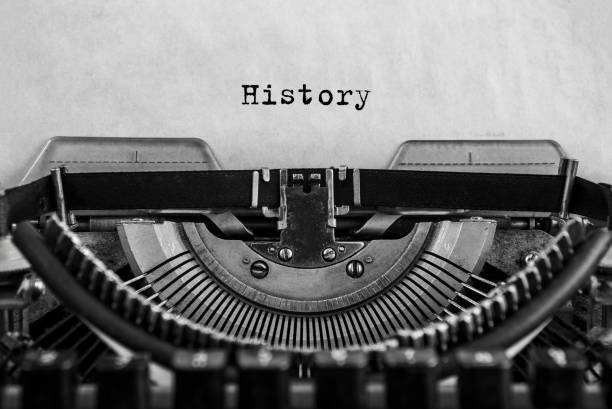Vietnam Essay Grade 12 memo: Questions and Answers PDF Download:
Vietnam Essay Grade 12 memo: Questions and Answers PDF Download:
The Extension of the Cold War: Case Study – Vietnam
Question 1:
The tactics and strategies that the United States of America used between 1963 and 1975 against the Vietcong during the war in Vietnam were a dismal failure. Do you agree with the statement? Use relevant evidence to support your line of argument.
Memo:
SUMMARY Candidates are expected to form an opinion on the statement, providing their agreement or disagreement. Their opinions should be based on arguments regarding whether the US lost the Vietnam War due to unconventional guerrilla warfare strategies and local environmental factors. Candidates should substantiate their viewpoints with relevant historical evidence.
KEY POINTS TO CONSIDER The following aspects should be included in the candidate’s response:
- Introduction: Candidates must state their position on the statement and provide an overview of their supporting arguments.
IN-DEPTH ANALYSIS The response should delve into the strategies used by both the USA and the Vietcong:
- Background: Examination of the division of North and South Vietnam, initial US intervention in South Vietnam due to the Domino Theory, and the significance of the Ho Chi Minh Trail.
- The introduction and failure of the ‘Safe Village’ policy by the USA, aiming to separate guerrillas from villagers.
- The Gulf of Tonkin incident and its impact on escalating the conflict.
- Deployment of 3500 US Marines and ground troops to Vietnam on March 8, 1965.
- Environmental factors: Operation Ranch Hand and the use of chemical defoliants and chemical weapons, leading to significant environmental damage and international condemnation.
- Ineffectiveness of conventional strategies (Operation Rolling Thunder) versus unconventional guerrilla warfare tactics by the Vietcong.
- Impact of the Tet Offensive on USA-controlled cities and increasing number of US soldiers’ casualties.
- The implications of sending young and inexperienced soldiers to Vietnam, Search and Destroy Policy, and the My Lai massacre, leading to increased support for the Vietcong.
- External support to North Vietnam from USSR and China, resulting in access to modern weaponry.
- Effective use of guerrilla warfare and environmental tactics (underground tunnels, booby traps, sabotage) by the Vietcong and Vietminh.
- Vietnamisation: Nixon’s strategic withdrawal policy from Vietnam indicating the failure of USA’s attempt to prevent Vietnam from becoming a communist state.
- The end of USA involvement in the Vietnam war after the signing of the Paris Peace Accords and eventual control of Vietnam under communist rule.
- Other pertinent responses.
Candidates should then draw their arguments to a close with appropriate conclusions.
Example Essay based on the above:
Title: The Failure of American Strategies in the Vietnam War (1963-1975): An Analytical Overview
Introduction
The Vietnam War (1963-1975) is an enduring symbol of the failure of American military might against a largely rural, determined insurgency, the Vietcong. This essay agrees with the assertion that the United States’ tactics and strategies against the Vietcong during this period were a dismal failure, given the historical evidence. The strategic miscalculations and failures will be analyzed, including the Safe Village policy, the introduction of chemical defoliants, and the unsuccessful attempts to separate the guerrillas from villagers.
The Unconventional War
As early as 1962, the United States had identified Vietnam not as a conventional battleground like WWII, but as a theater for countering communist influence, underpinned by the fear of the Domino Theory. This strategy led to the implementation of the ‘Safe Village’ policy, designed to isolate the Vietcong from villagers. However, this policy failed because the Vietcong effectively operated within the villages themselves.
Chemical Warfare and Unintended Consequences
Operation Ranch Hand, initiated in 1962, introduced the use of chemical defoliants like Agent Orange and Agent Blue, aimed at environmental warfare by destroying forests and crops. However, these tactics did not effectively weaken the Vietcong, and instead caused substantial environmental damage and international condemnation, turning global public opinion against the United States.
Moreover, the application of chemical weapons, notably Napalm gas, resulted in widespread civilian casualties and atrocities such as the My Lai massacre in March 1968, which further fueled anti-war sentiment in the United States and abroad. This further strained the United States’ already fragile credibility and exacerbated support for the Vietcong.
Misjudgment of Guerrilla Tactics
The U.S. notably failed to anticipate and effectively respond to the guerrilla warfare tactics employed by the Vietcong. These tactics, which included the use of underground tunnels, booby traps, sabotage, and hit-and-run attacks, were instrumental in the Vietcong’s resilience against the American military.
The Tet Offensive of 1968 was a clear example of the Vietcong’s ability to adapt and respond to the U.S. strategies. The surprise attacks on over 100 U.S.-controlled cities not only challenged the American military but also deeply impacted the U.S. home front, leading to increased anti-war demonstrations. This, coupled with the deployment of young and inexperienced soldiers, further weakened the U.S. efforts.
Failed De-escalation and Withdrawal
Towards the end of the war, the United States tried to employ a strategy of “Vietnamisation” under President Nixon, aimed at strategically withdrawing U.S. troops while bolstering South Vietnam’s ability to combat communism. The policy, dubbed WHAM (Winning the Hearts and Minds of the Vietnamese), was largely seen as an admission of the failure of U.S. strategies and led to the eventual withdrawal of all U.S. troops by 1973, following the Paris Peace Accords.
Conclusion
In conclusion, the American tactics and strategies against the Vietcong during the Vietnam War (1963-1975) were indeed a dismal failure. Not only did they fail to curtail the Vietcong, but they also led to significant civilian casualties, alienated global public opinion, and failed to prevent Vietnam’s unification under communist rule. The inability to adapt to guerrilla warfare, coupled with strategic missteps, such as the Safe Village policy and the application of chemical warfare, resulted in the U.S. failing to achieve its objectives in Vietnam. Thus, this period represents a sobering lesson in the limitations of conventional warfare against determined and adaptable insurgencies.
Question 2:
The USA withdrew from Vietnam in 1975 because the war became more difficult and the public at home was turning against the USA’s participation. Do you agree with the statement? Support your answers with relevant historical evidence.
Memo:
Introduction: In this response, I will agree with the statement and provide a comprehensive argument showcasing the difficulties faced by America in the Vietnam War and how public sentiment turned against the conflict.
Elaboration:
The Vietnam War presented numerous challenges for the United States, ultimately leading to a shift in public opinion against the war. Several key factors contributed to this shift:
- Geneva agreement and division of Vietnam: The Geneva agreement of 1954 divided Vietnam into North and South, setting the stage for the conflict. South Vietnam, under President Ngo Dinh Diem, refused to hold elections, leading to discontent among the Vietnamese people.
- The rise of the Vietcong: The communist Vietcong emerged in South Vietnam, starting a guerrilla war against the government. Their tactics included booby traps, underground tunnels, surprise attacks, and hit-and-run strategies, making it difficult for the United States to combat them effectively.
- USA’s involvement and rationale: The United States entered the war based on the principles of containment and the domino theory, fearing the spread of communism. They provided weapons and advisors to South Vietnam, while the Vietcong received support from China, Russia, and the Vietminh via the Ho Chi Minh Trail.
- Failures and setbacks: Despite implementing strategies like the safe village policy and Operation Rolling Thunder, the United States struggled to quell the Vietcong’s insurgency. The safe village policy failed as the Vietcong operated within the villages, and Operation Rolling Thunder did not succeed in destroying the Ho Chi Minh Trail.
- Public disillusionment and media exposure: The use of chemical weapons, such as Agent Orange and Agent Blue, by the United States, turned the Vietnamese population against them. Additionally, televised coverage of the war exposed the horrors faced by both soldiers and civilians, leading many Americans to question the justification and morality of their country’s involvement.
- Tet Offensive and its aftermath: The Tet Offensive in 1968, where the Vietcong launched surprise attacks and captured numerous cities, caused heavy casualties among U.S. forces. The offensive and subsequent events, including US atrocities like the My Lai massacre, further fueled anti-war sentiment and intensified protests within the United States.
- Vietnamization and withdrawal: President Nixon implemented the Vietnamization policy, which involved the gradual withdrawal of U.S. troops while South Vietnam continued the fight against the Vietcong. Eventually, all U.S. troops were withdrawn by 1973, and in 1975, North Vietnam took control of Saigon, unifying the country under a communist government.
Conclusion: The Vietnam War posed significant challenges for the United States, with the public opinion gradually turning against the conflict due to a combination of factors. The unconventional tactics employed by the Vietcong, the disillusionment caused by media exposure, and the inability of the U.S. to achieve decisive victories all contributed to the changing perception of the war. Ultimately, the United States withdrew its troops, and the communist forces emerged victorious. The Vietnam War stands as a stark reminder of the complexities of warfare and the crucial role public opinion plays in shaping the outcomes of such conflicts.
Example Essay based on the above:
Title: The American Withdrawal from Vietnam in 1975: A Confluence of Military Challenges and Domestic Opposition
Introduction
I concur with the statement that the USA withdrew from Vietnam in 1975 largely due to the escalating difficulty of the war and the burgeoning opposition at home. This essay will argue this position using relevant historical evidence and will explore the multi-faceted reasons for this turn of events, encompassing both geopolitical considerations and socio-political dynamics.
The Military Quagmire
The Geneva Accords of 1954 divided Vietnam into North and South, setting a stage ripe for conflict. When South Vietnam’s leader Diem refused to hold reunification elections, fearing communist victory, this led to the formation of the communist Viet Cong, backed by North Vietnam, China, and Russia. The USA, driven by Cold War ideologies of containment and the domino theory, provided support to South Vietnam to counter this threat. However, they grossly underestimated the complexity of the war.
The Viet Cong’s successful guerrilla tactics and intimate knowledge of the terrain posed a formidable challenge to the US forces. They were farmers by day and freedom fighters by night, often indistinguishable from the civilian population, and used intricate networks of tunnels and booby traps to launch surprise attacks. This innovative warfare, coupled with the harsh jungle environment, made American military operations – including Operation Rolling Thunder aimed at destroying the Ho Chi Minh Trail – largely ineffective.
The Domino Effect at Home
Meanwhile, at home, the American public sentiment was changing. The Gulf of Tonkin incident, which led to the escalation of US involvement, had initially galvanized support for the war. However, as the war dragged on with mounting casualties – the Tet Offensive alone resulted in 14,000 US casualties – and little progress, public opinion began to sour.
The widespread use of television brought the horrors of the war into American homes. The brutalities of the war, such as the My Lai massacre, and the use of controversial chemical weapons like Agent Orange, sparked public outcry. The war became increasingly unpopular, leading to widespread anti-war protests and a general consensus that the war was unwinnable. The pressure to withdraw was further intensified by revelations about the government’s deceit in managing public perceptions of the war, notably exposed in the Pentagon Papers.
The Path to Withdrawal
By 1969, with domestic opposition escalating and the war showing no signs of a decisive victory, President Nixon initiated the policy of Vietnamization. This policy aimed at training South Vietnamese forces to take over the fight while gradually withdrawing US troops. This marked a significant shift in US strategy, effectively signaling the impending end of direct US involvement.
In 1973, the Paris Peace Accords were signed, leading to the complete withdrawal of US troops. However, without American support, South Vietnam fell to the communist forces, and Saigon was captured in 1975, marking the end of the Vietnam War.
Conclusion
In conclusion, the US withdrawal from Vietnam in 1975 was indeed the result of a combination of the war’s growing difficulty and escalating domestic opposition. The military challenges were underscored by the Viet Cong’s effective guerrilla tactics and the unfavorable environmental conditions, while domestic opposition was fueled by a disillusioned and protesting public. This historic event illustrates the profound impact of both military realities on the ground and public sentiment at home in shaping the course of foreign policy and military involvement.






